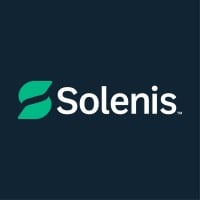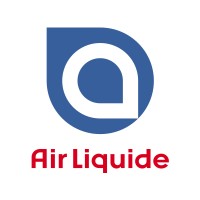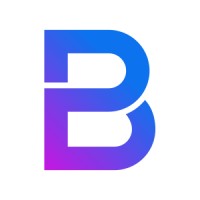Company Cyber Security Posture
NANA
NA Company Details
NA
NA
NA
NA
NA
NA
Scan still pending
NA
NA
Between 200 and 800
This score is AI-generated and less favored by cyber insurers, who prefer the TPRM score.
 NA Global Score
NA Global Score.png)

Company Scoring based on AI Models
| Model Name | Date | Description | Current Score Difference | Score |
|---|---|---|---|---|
| AVERAGE-Industry | 03-12-2025 | This score represents the average cybersecurity rating of companies already scanned within the same industry. It provides a benchmark to compare an individual company's security posture against its industry peers. | N/A | Between 200 and 800 |
Company Cyber Security News & History
| Entity | Type | Severity | Impact | Seen | Url ID | Details | View |
|---|
Company Subsidiaries

NA
Access Data Using Our API

Get company history
.png)
NA Cyber Security News
Cyber security and resilience: Lessons from Ukraine
Over the past few years cyberspace has changed the way we live, work and communicate. It has become critical to our future prosperity, ...
Spatiotemporal characteristics and drivers of global cyber conflicts | Humanities and Social Sciences Communications
In recent years, state-sponsored malicious cyber activities have emerged incessantly, which has resulted in an increasingly severe ...
The Wilson Center Announces Distinguished Fellow Bryan Cunningham
WASHINGTON - The Wilson Center has named H. Bryan Cunningham a Distinguished Fellow. A renowned expert in national security, cybersecurity, ...
Trump administration retreats in fight against Russian cyber threats
The US has long warned that Russia posed a cyber threat to US infrastructure, including in the annual threat assessment published by US ...
Salt in the wound
A Chinese state-linked cyberattack on major U.S. telecom providers has compromised sensitive wiretapping systems, raising serious concerns ...
The Top 10 Best Colleges in Ukraine for Tech Enthusiasts in 2024
Discover the top 10 best tech colleges in Ukraine for 2024. From KPI to KhAI, find the right institution for your tech education journey.
Proposal for Cyber Force study is watered down in final defense bill
Air Force Gen. Timothy Haugh, who heads the command and the National Security Agency, has publicly and privately spoken out against the idea of ...
Trawling Hacker Forums Uncovers Crucial Information on Space Cyber Attacks | November 2024
Takeaways from a new study from the Center for Security Studies at ETH Zurich that identified 124 cyberattacks against the space sector.
State Cybersecurity Policy: Ukraine and International Experience
Cybersecurity has become a key area of state policy worldwide. Ukraine, facing unprecedented pressure from cyberattacks, has recently adopted a ...

NA Similar Companies

Solenis
Solenis is a leading global producer of specialty chemicals focused on delivering sustainable solutions for water-intensive industries, including consumer, industrial, institutional, food and beverage, and pool and spa water markets. Owned by Platinum Equity, the company’s product portfolio includes

Laboratoires Anios
Our global growth of over 100% in 5 years positions us as the recognized leader in professional disinfection and hygiene. Our specialized teams, scientific resources, and production tools have enabled us to boast a real know-how and a thorough expertise underpinned by a real company spirit. A true

Solvay
Welcome to Solvay, where science and mastery come together, creating excellence that stands the test of time. With a 160-year legacy, we're not just innovators; we're on a constant journey of progress, mastering the essential elements of our world. We're all about revealing potentials, just like

Air Liquide
Air Liquide is a world leader in gases, technologies and services for industry and healthcare. Present in 60 countries with approximately 66,500 employees, the Group serves more than 4 million customers and patients. Oxygen, nitrogen and hydrogen are essential small molecules for life, matter and en

Brenntag
We're the global market leader in full-line range of chemical & ingredient products and value-added services. Our more than 17,500 employees provide tailor-made application, marketing and supply chain solutions. Our full-line portfolio comprises specialty and industrial chemicals and ingredients of

IFF
Meet IFF: We boldly bring together science and creativity to create what the world needs. An industry leader in food, beverage, scent, health and biosciences, we create essential solutions – from global icons to unexpected innovations and experiences. Equal parts outspoken and analytical, our inte

Frequently Asked Questions
Explore insights on cybersecurity incidents, risk posture, and Rankiteo's assessments.
NA CyberSecurity History Information
How many cyber incidents has NA faced?
Total Incidents: According to Rankiteo, NA has faced 0 incidents in the past.
What types of cybersecurity incidents have occurred at NA?
Incident Types: The types of cybersecurity incidents that have occurred include .
Additional Questions
What Do We Measure?
















Every week, Rankiteo analyzes billions of signals to give organizations a sharper, faster view of emerging risks. With deeper, more actionable intelligence at their fingertips, security teams can outpace threat actors, respond instantly to Zero-Day attacks, and dramatically shrink their risk exposure window.
These are some of the factors we use to calculate the overall score:
Identify exposed access points, detect misconfigured SSL certificates, and uncover vulnerabilities across the network infrastructure.
Gain visibility into the software components used within an organization to detect vulnerabilities, manage risk, and ensure supply chain security.
Monitor and manage all IT assets and their configurations to ensure accurate, real-time visibility across the company's technology environment.
Leverage real-time insights on active threats, malware campaigns, and emerging vulnerabilities to proactively defend against evolving cyberattacks.




